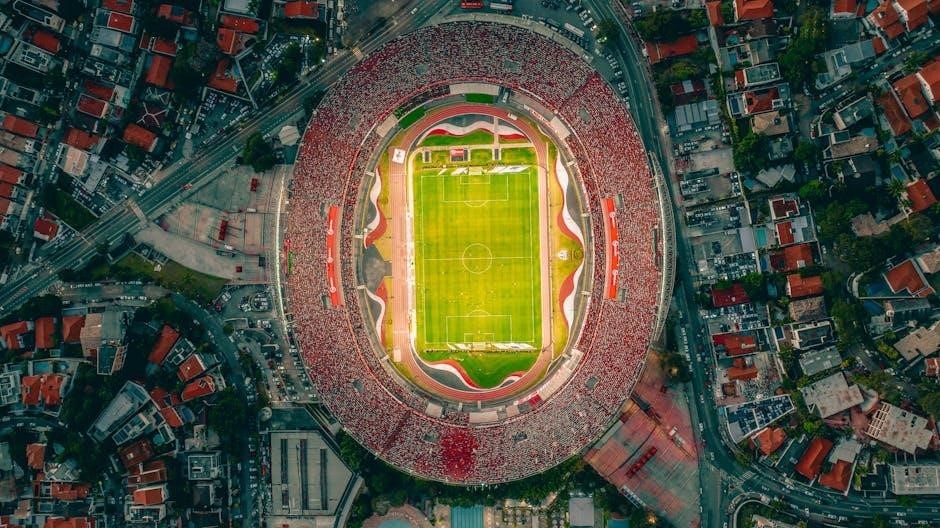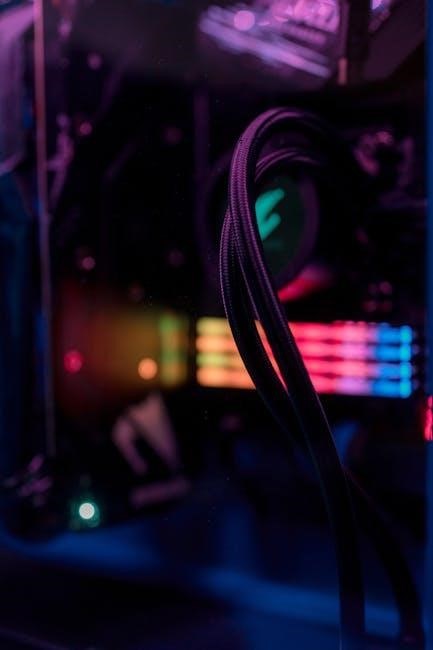Game Engine Architecture PDF: A Comprehensive Guide
This comprehensive guide delves into the intricate world of game engine architecture, offering a detailed exploration of its core components and best practices. Drawing from industry-standard resources and expert insights, this guide provides valuable knowledge for aspiring and experienced game developers.
Game engine architecture forms the backbone of modern game development, providing a structured framework for creating interactive and engaging experiences. Understanding this architecture is crucial for developers aiming to build robust, scalable, and maintainable game systems.
At its core, game engine architecture encompasses the design principles and patterns that govern how different components of a game engine interact. These components include rendering, physics, audio, artificial intelligence, and gameplay systems, all working in harmony to deliver a cohesive gaming experience.

This introduction will explore the fundamental concepts of game engine architecture, highlighting the key considerations for designing an efficient and effective engine. We’ll delve into the importance of modularity, abstraction, and data-oriented design, examining how these principles contribute to the overall flexibility and performance of the engine.
Furthermore, we’ll discuss the different approaches to game engine architecture, from monolithic designs to component-based systems, and analyze the trade-offs associated with each. By the end of this introduction, you’ll have a solid foundation for understanding the complexities and nuances of game engine architecture, setting the stage for a deeper dive into specific components and techniques.
Core Components of a Game Engine
A game engine is a complex system comprised of several core components that work together to create interactive experiences. These components can be broadly categorized into rendering, physics, audio, gameplay logic, and resource management. Each component plays a crucial role in bringing the game world to life.
The rendering engine is responsible for visually representing the game world, handling tasks such as drawing objects, applying textures, and simulating lighting and shadows. The physics engine simulates the laws of physics, allowing for realistic movement, collisions, and interactions between objects. The audio engine manages sound effects, music, and voiceovers, creating an immersive auditory experience.
Gameplay logic encompasses the rules, mechanics, and systems that govern how the player interacts with the game world. This includes handling player input, managing game state, and implementing artificial intelligence for non-player characters. Resource management is responsible for loading, storing, and managing game assets, such as textures, models, and audio files.
These core components are interconnected and rely on each other to function effectively. A well-designed game engine architecture ensures that these components are modular, reusable, and easily maintainable, allowing developers to create complex and engaging games efficiently.
Rendering Engine Architecture
The rendering engine is a critical component of any game engine, responsible for generating the visuals that players see on screen. Its architecture is typically complex, involving multiple stages and algorithms to transform 3D scene data into a 2D image.
At the heart of the rendering engine lies the graphics pipeline, a sequence of operations that processes vertex data, applies transformations, performs lighting calculations, and rasterizes the resulting polygons into pixels. This pipeline often leverages the capabilities of modern GPUs (Graphics Processing Units) to accelerate these computations.
Key aspects of rendering engine architecture include scene management, which organizes and structures the 3D scene data, shader management, which handles the compilation and execution of shaders (small programs that control how objects are rendered), and rendering techniques, such as forward rendering, deferred rendering, and ray tracing, each with its own trade-offs in terms of performance and visual quality.
Modern rendering engines also incorporate advanced features like post-processing effects (e.g., bloom, motion blur), shadow mapping, and global illumination to enhance the visual fidelity of the game. The design of the rendering engine must balance performance, visual quality, and flexibility to meet the specific needs of the game being developed.
Physics Engine Architecture
The physics engine is a vital component of a game engine, responsible for simulating the physical interactions between objects in the game world. Its architecture is designed to accurately and efficiently model phenomena such as gravity, collisions, and rigid body dynamics.
At the core of the physics engine lies the collision detection system, which determines when objects are intersecting. This system often employs techniques like bounding volume hierarchies (BVH) to accelerate the detection process.
Once collisions are detected, the collision response system calculates the appropriate forces and impulses to apply to the colliding objects, ensuring realistic reactions. This may involve solving complex equations of motion and applying constraints to maintain stability.
The physics engine also typically includes a solver, which iteratively refines the positions and velocities of objects until the simulation reaches a stable state. Different solvers exist, each with its own trade-offs in terms of accuracy and performance. Common techniques include iterative solvers and constraint-based solvers.
Advanced physics engines may also incorporate features like ragdoll physics, fluid simulation, and cloth simulation to further enhance the realism of the game world. The architecture of the physics engine must balance accuracy, performance, and stability to provide a compelling and believable gameplay experience.
Audio Engine Architecture

The audio engine is a crucial subsystem within a game engine, responsible for managing and processing all audio-related tasks. Its architecture is designed to efficiently handle a wide range of audio sources, effects, and output devices, creating an immersive and engaging soundscape for the player.
At the heart of the audio engine lies the audio resource manager, which loads, stores, and manages audio assets such as sound effects, music tracks, and dialogue. This component ensures that audio resources are efficiently utilized and readily available when needed;
The audio mixer combines multiple audio sources into a single output stream, applying volume adjustments, panning, and other effects to create a balanced and cohesive mix. This allows for dynamic soundscapes where different audio elements blend seamlessly.
Audio effects processors add depth and realism to the soundscape by simulating environmental acoustics, applying reverb, and distorting sounds. These effects can significantly enhance the player’s immersion in the game world.
The audio engine also interfaces with the output devices, such as speakers or headphones, to deliver the final audio output to the player. This involves handling audio formats, sample rates, and other device-specific settings to ensure optimal sound quality.
Advanced audio engines may incorporate features like 3D spatial audio, dynamic music, and interactive sound design to create a truly immersive and responsive audio experience.
Gameplay Systems Architecture
The gameplay systems architecture forms the core logic and interactive elements of a game. It dictates how players interact with the game world, how characters behave, and how the game responds to player actions. A well-designed gameplay architecture is crucial for creating engaging and enjoyable experiences.

At the heart of this architecture lies the entity-component system (ECS), a popular design pattern for managing game objects. ECS promotes modularity and flexibility by separating data (components) from behavior (systems). Entities are simple containers that hold components, while systems process entities based on their components.
Input handling is a key aspect, translating player actions (keyboard presses, mouse movements, controller inputs) into game commands. The input system must be responsive and accurate to provide a fluid and intuitive player experience.
Game logic encompasses the rules and mechanics that govern the game world. This includes things like character movement, combat, puzzle solving, and AI behavior. Scripting languages are often used to implement game logic, allowing for rapid prototyping and iteration.
AI systems control the behavior of non-player characters (NPCs), ranging from simple enemy AI to complex social interactions. AI systems often rely on techniques like pathfinding, decision trees, and finite state machines.
The gameplay architecture also includes systems for managing game state, save/load functionality, and user interface (UI) elements. These systems ensure that the game can be easily paused, resumed, and customized by the player.
Tools and the Asset Pipeline
The tools and asset pipeline are crucial for efficient game development, enabling artists, designers, and programmers to create and integrate content seamlessly. A well-designed pipeline streamlines the process of importing, processing, and managing assets, reducing development time and improving overall workflow.
Asset creation tools include software for creating 3D models, textures, audio files, and animations. These tools often integrate with the game engine, allowing artists to preview their work in-game.
The asset pipeline is a series of processes that transform raw assets into a format suitable for the game engine. This typically involves importing, converting, optimizing, and packaging assets.
Asset management systems are used to organize and track assets, ensuring that everyone on the team has access to the latest versions. Version control systems, such as Git, are commonly used to manage changes to assets.
Level editors allow designers to create and modify game levels, placing assets, defining gameplay areas, and scripting events. Level editors often provide a visual interface for manipulating the game world.
Scripting tools enable programmers to write and debug game logic, using languages like Lua, C#, or Python. Scripting tools often integrate with the game engine, providing access to game objects and systems.
Build tools automate the process of compiling and packaging the game for different platforms. Build tools can also perform tasks like asset optimization and code obfuscation.
Runtime Engine Architecture
The runtime engine architecture is the core of a game engine, responsible for managing all aspects of the game while it is running. It encompasses the systems that handle rendering, physics, audio, input, and gameplay logic, all working together to create a dynamic and interactive experience for the player.
The game loop is the heart of the runtime engine, continuously updating the game state and rendering the scene. It typically consists of processing input, updating game logic, simulating physics, and rendering the frame.
Scene management is responsible for organizing and managing the game world, including all the objects, lights, and cameras. Scene graphs are commonly used to represent the hierarchical structure of the scene.
Resource management handles the loading and unloading of assets, such as textures, models, and audio files. Efficient resource management is crucial for maintaining performance and memory usage.
Input management processes input from various devices, such as keyboards, mice, and game controllers, and translates it into game actions.
Networking manages communication between clients and servers in multiplayer games, handling tasks like data serialization, synchronization, and security.
Memory management allocates and deallocates memory for game objects and data structures. Efficient memory management is essential for preventing memory leaks and fragmentation.
The runtime engine architecture must be designed for performance, scalability, and maintainability, ensuring that the game can run smoothly on a variety of platforms and devices.
Memory Management and Optimization
Efficient memory management is paramount in game engine architecture, directly impacting performance and stability. Games often handle vast amounts of data, from textures and models to audio clips and game state information. Inadequate memory management can lead to crashes, slowdowns, and an overall poor player experience.
Memory allocation strategies are crucial. Custom allocators, such as object pools and memory arenas, can reduce fragmentation and improve allocation speed compared to standard library allocators. These techniques allow for pre-allocating memory blocks, minimizing runtime overhead.
Data structures should be chosen with memory efficiency in mind. Consider using compact data structures and minimizing unnecessary data duplication. Techniques like data-oriented design can help optimize memory layout for better cache utilization.
Garbage collection can simplify memory management, but it can also introduce performance hiccups due to unpredictable pauses. Understanding garbage collection behavior and minimizing garbage generation is essential.
Resource management plays a vital role. Loading and unloading assets intelligently, using level of detail (LOD) techniques, and employing texture compression can significantly reduce memory footprint.
Profiling tools are indispensable for identifying memory leaks, excessive allocations, and other memory-related issues. Regularly profiling the game helps pinpoint areas for optimization.
Memory budgets should be established and enforced to prevent memory exhaustion. Monitoring memory usage during development allows for proactive identification and resolution of potential problems.
Best Practices in Game Engine Architecture
Adhering to best practices in game engine architecture is crucial for creating robust, maintainable, and scalable game engines. A well-designed architecture facilitates efficient development, collaboration, and long-term support.
Modularity is a cornerstone of good architecture. Breaking down the engine into independent modules, such as rendering, physics, and audio, promotes code reuse and simplifies maintenance. Each module should have a clear interface and minimal dependencies on other modules.
Abstraction is essential for hiding implementation details and providing a clean, high-level interface to the engine. This allows developers to work with the engine without needing to understand the underlying complexities.
Data-oriented design focuses on organizing data for optimal performance. Arranging data in a cache-friendly manner can significantly improve processing speed.
Version control is indispensable for managing code changes and facilitating collaboration. Using a robust version control system, such as Git, is crucial for tracking changes and resolving conflicts.
Code reviews help ensure code quality and consistency. Regular code reviews can identify potential bugs, improve code style, and promote knowledge sharing.
Profiling and optimization should be integrated into the development process. Regularly profiling the engine helps identify performance bottlenecks and areas for improvement.
Documentation is crucial for making the engine understandable and usable. Clear and comprehensive documentation helps developers learn the engine quickly and efficiently.
Recommended Resources: Books and Tutorials

To further your understanding of game engine architecture, several excellent resources are available. These resources offer a blend of theoretical knowledge and practical guidance, catering to various learning styles and experience levels.
“Game Engine Architecture” by Jason Gregory is widely regarded as the definitive guide to the subject. This comprehensive book covers a wide range of topics, from low-level engine systems to high-level gameplay mechanics. It provides in-depth explanations, real-world examples, and best practices used by top game studios.
“3D Game Engine Architecture” by David H. Eberly offers another valuable perspective on game engine design. While similar in scope to Gregory’s book, it provides alternative approaches and insights.
Online tutorials and courses can supplement your learning. Websites like “thebennybox” and university course materials, such as EECS 498 from the University of Michigan, offer practical guidance and hands-on experience.
Exploring the source code of open-source game engines, such as raylib and Godot Engine, can provide valuable insights into real-world implementations. Analyzing these engines can help you understand how different components interact and how best practices are applied.
Additionally, resources focusing on specific engine subsystems, such as rendering (e.g., “Real-Time Rendering”), physics, and audio, can deepen your knowledge in those areas.